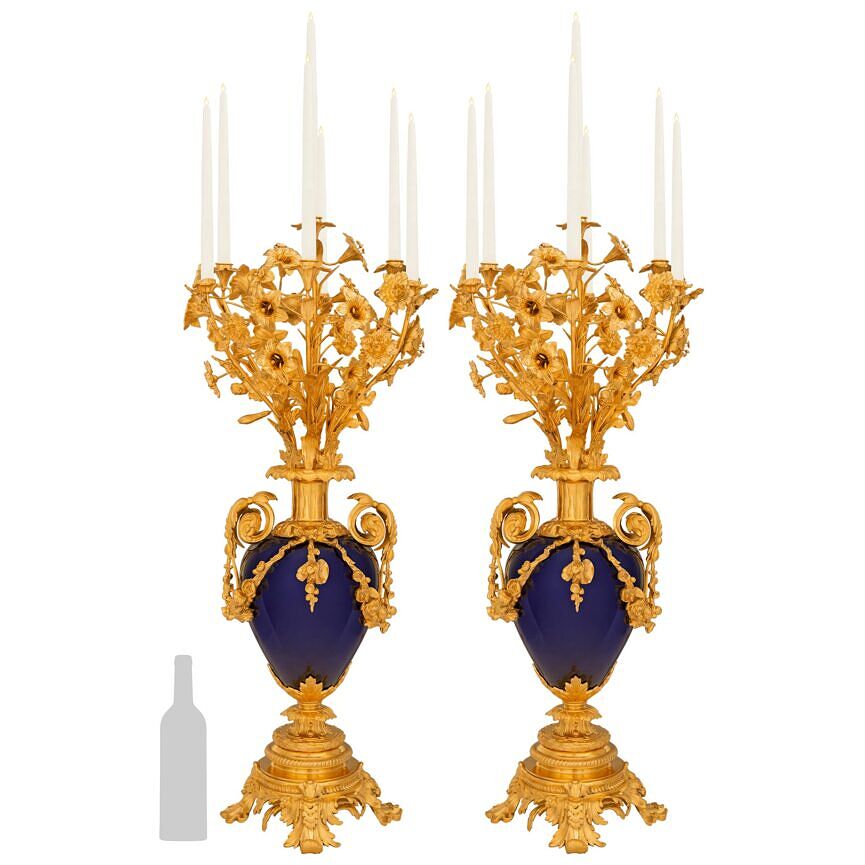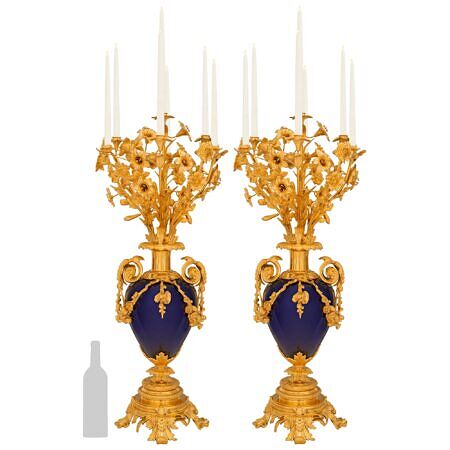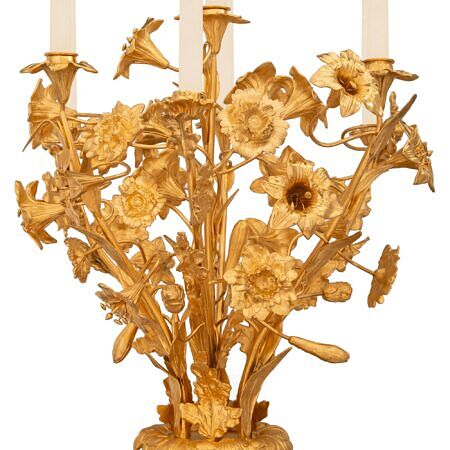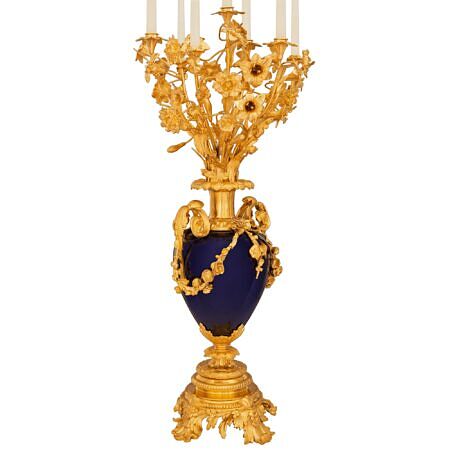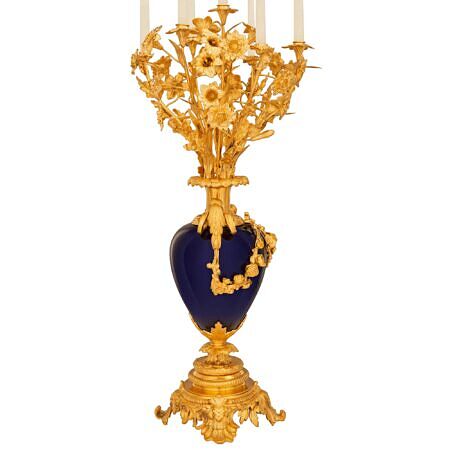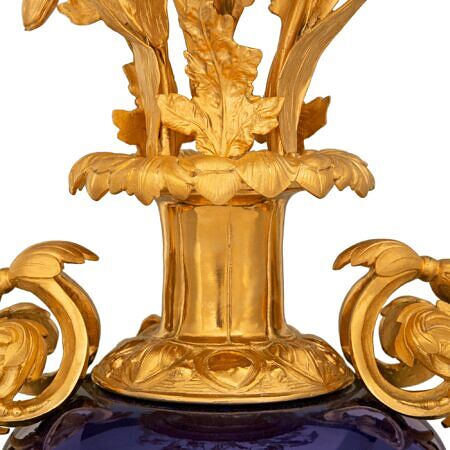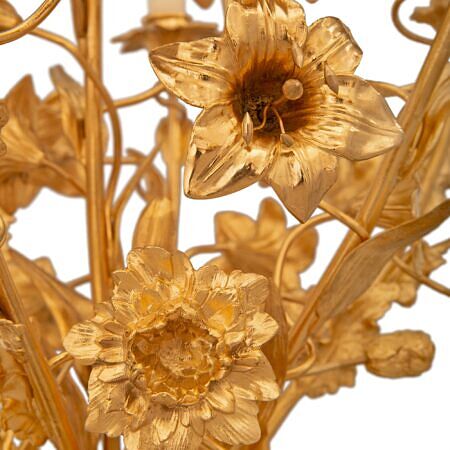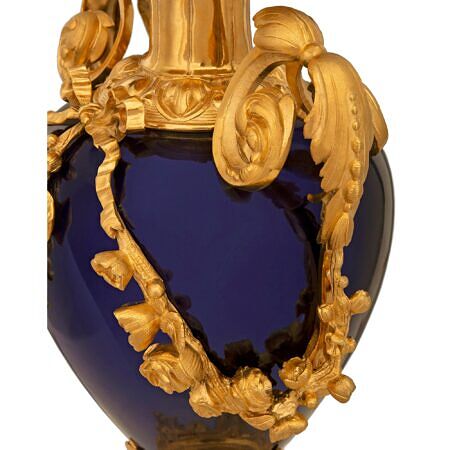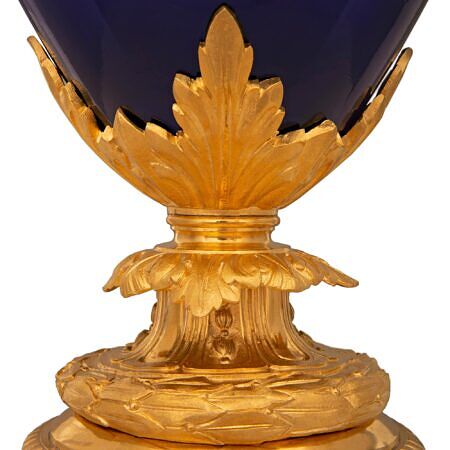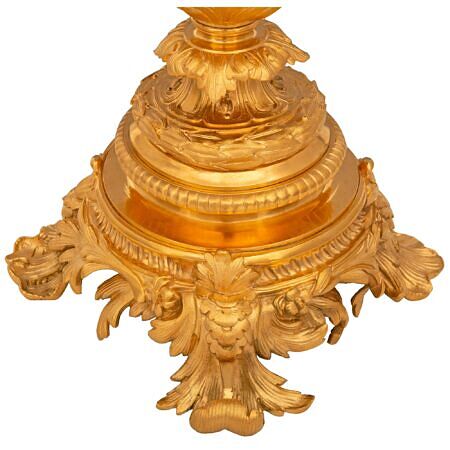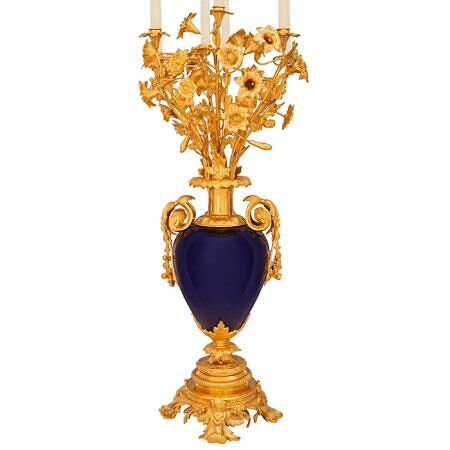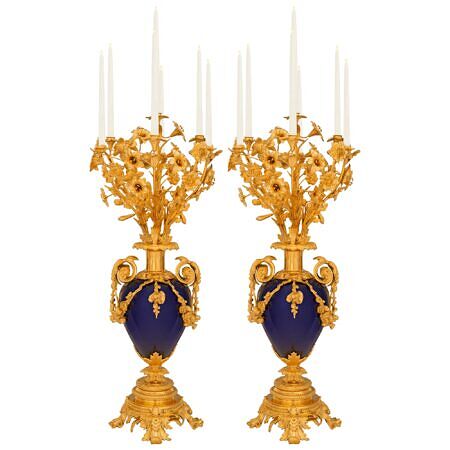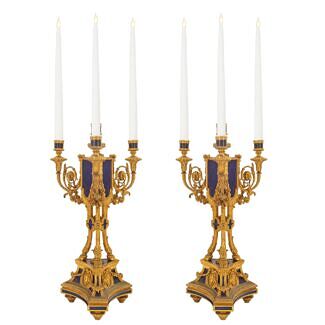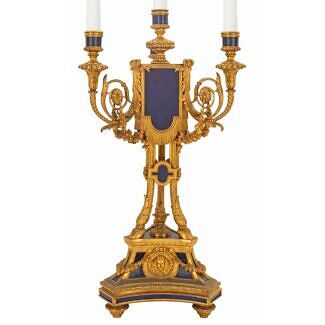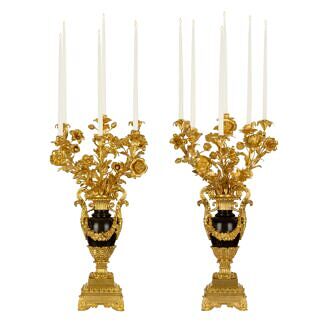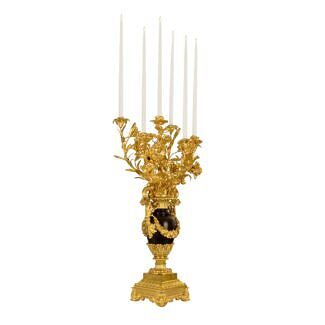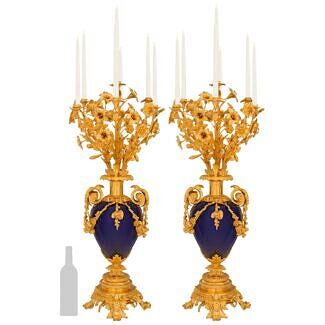A pair of French 19th century Louis XVI st. Sèvres Porcelain and Ormolu candelabras
List: $36,800.00
An impressive and large scale pair of French 19th century Louis XVI st. Sèvres Porcelain and Ormolu candelabras. The richly decorated pair of seven arm candelabras are supported by four beautiful “C” scrolled acanthus leaf supports flanked by flowers and... — Read More
An impressive and large scale pair of French 19th century Louis XVI st. Sèvres Porcelain and Ormolu candelabras. The richly decorated pair of seven arm candelabras are supported by four beautiful “C” scrolled acanthus leaf supports flanked by flowers and flowing leaves. Atop is a circular socle pedestal with concave levels amidst a reeded band separating them. Above the socle is a laurel band below a double spray of leaves which support the cobalt blue Porcelain urns. The polished Porcelain urns have highly detailed swaging floral garlands and flowing ribbons that lead to the “C” scrolled arms at the top. The necks of the urns have narrow polished and lightly etched thin cylinders leading up to a fine leafed rim. The foliate rim is below a fanciful abundance of scrolled blossoming flowers and wandering acanthus leaves, which hold the seven floral candle cups. — Read Less
All light fixtures have been inspected and rewired to US standards.
- Item # 13410
-
H: 40 in L: 16.5 in D: 18 in
H: 102 cm L: 42 cm D: 46 cm
- Candle Height: 12 in
- France
- 19th Century
- Ormolu, Porcelain
- Louis XVI st. Read More
- Sèvres Read More
It was founded through the support of King Louis XV of France and at the initiative of Madame Pompadour to be located near her Château.
Due to Sèvres’ reputation for excellence and prestige, it has always attracted some of the best artists throughout history; François Boucher, Albert-Ernest Carrier-Belleuse, Étienne Maurice Falconet, Alexandre Fragonard and August Rodin, just to name a few. Many of these artworks can be seen at the Louvre Museum and the Musée National de Céramique in France.
Initially, Sèvres created a soft paste porcelain know as Biscuit de Sèvres. In 1768 the Bordeaux chemist Villaris and Jean Baptiste Darnet discovered deposits of Kaolin on French soil. In 1771 the Royal Academy sent a report on the creation of hard paste porcelain at which time Sèvres began manufacturing hard paste porcelain.
Louis-Simon Boizot (1743–1809) was a French sculptor renowned for creating Biscuit de Sèvres models, and was the director at Sèvres from 1774-1800, followed by Alexandre Brogniart(1800-1847) and Henri Victor Regnault in 1854.
Related products
-
# 3148 - H: 21" L: 10" D: 10"
-
# 5089 - H: 35" L: 19" D: 14"
-
# 8425 - H: 16" L: 13" D: 12"


